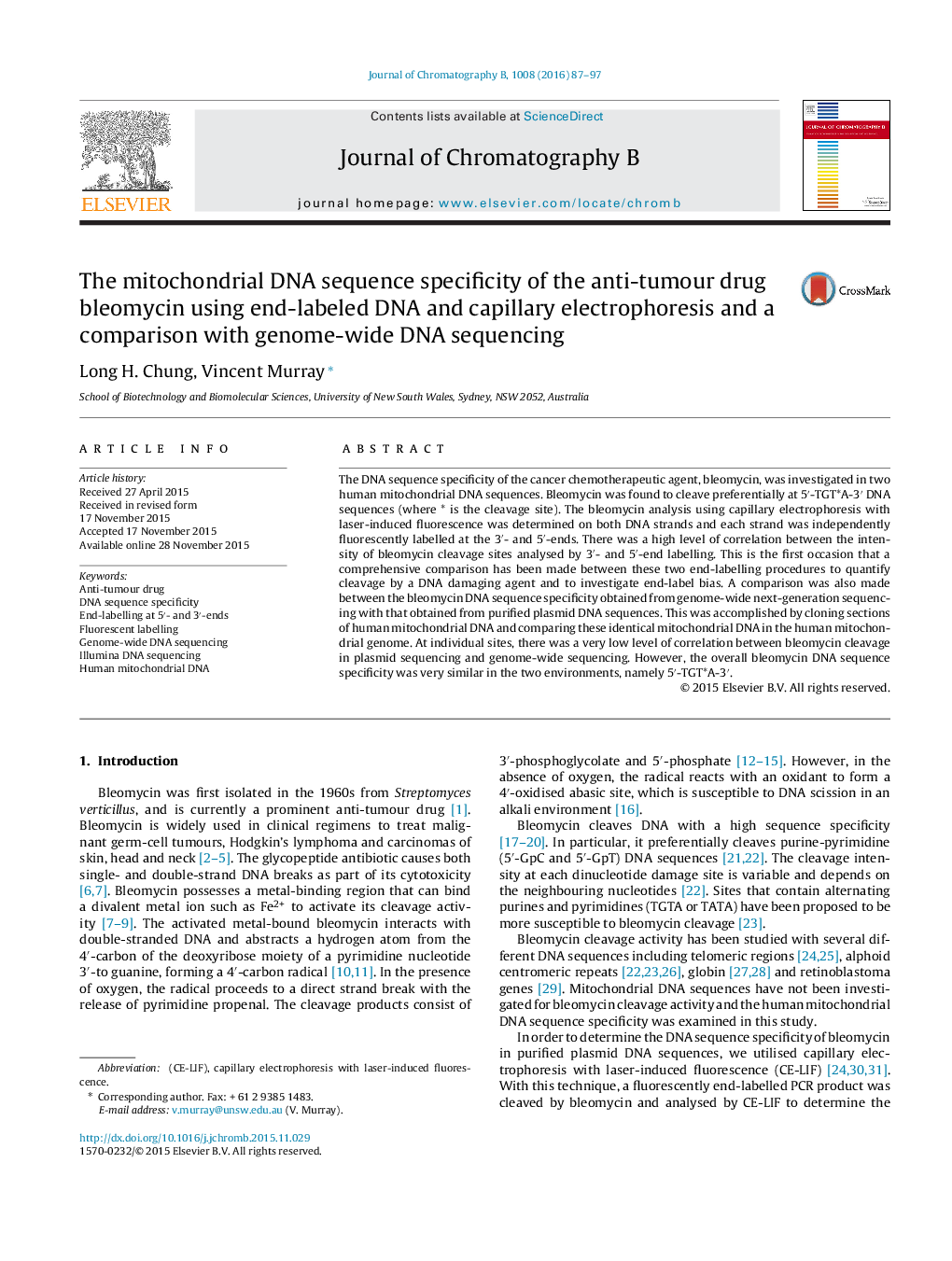| Article ID | Journal | Published Year | Pages | File Type |
|---|---|---|---|---|
| 1214825 | Journal of Chromatography B | 2016 | 11 Pages |
•Comparison of techniques to determine bleomycin DNA sequence specificity.•Bleomycin sequence specificity determined with 5′- or 3′-end-labelled DNA.•This quantitative comparison enabled end-label bias to be investigated.•Twin end-labelling procedure is more accurate than previous techniques.•Comparison with next-generation genome-wide DNA sequencing data.
The DNA sequence specificity of the cancer chemotherapeutic agent, bleomycin, was investigated in two human mitochondrial DNA sequences. Bleomycin was found to cleave preferentially at 5′-TGT*A-3′ DNA sequences (where * is the cleavage site). The bleomycin analysis using capillary electrophoresis with laser-induced fluorescence was determined on both DNA strands and each strand was independently fluorescently labelled at the 3′- and 5′-ends. There was a high level of correlation between the intensity of bleomycin cleavage sites analysed by 3′- and 5′-end labelling. This is the first occasion that a comprehensive comparison has been made between these two end-labelling procedures to quantify cleavage by a DNA damaging agent and to investigate end-label bias. A comparison was also made between the bleomycin DNA sequence specificity obtained from genome-wide next-generation sequencing with that obtained from purified plasmid DNA sequences. This was accomplished by cloning sections of human mitochondrial DNA and comparing these identical mitochondrial DNA in the human mitochondrial genome. At individual sites, there was a very low level of correlation between bleomycin cleavage in plasmid sequencing and genome-wide sequencing. However, the overall bleomycin DNA sequence specificity was very similar in the two environments, namely 5′-TGT*A-3′.
